
Bronze Age wool economy: production, trade, environment, husbandry and society (THESP)
Short description
This project aims to shed light on the significance of wool and wool textile production in the European Bronze Age.
Its main purpose is to investigate archaeological and archaeozoological material to identify, understand and interpret the impact of wool production on society, the environment and agricultural practices. It also aims to deepen our general understanding of human engagement with animals, particularly sheep breeds, and animal husbandry practices. The study draws upon well-documented material from Hungary and northern Italy, areas that have indications of extensive wool textile production.
This project takes an innovative approach by including the strontium analyses of sheep bones to bridge the data for areas where actual textiles are not preserved.
This project aims to shed light on the significance of wool and wool textile production in the European Bronze Age.
Its main purpose is to investigate archaeological and archaeozoological material to identify, understand and interpret the impact of wool production on society, the environment and agricultural practices. It also aims to deepen our general understanding of human engagement with animals, particularly sheep breeds, and animal husbandry practices. The study draws upon well-documented material from Hungary and northern Italy, areas that have indications of extensive wool textile production.
Textile production in general and the introduction of woollen textiles represented a great revolution in Bronze Age Europe at the dawn of the 2nd millennium BC. The available contemporary written sources from the Mediterranean and Near East bear witness to the fact that textile production was an important part of several local economies. In Europe only archaeological material can help us understand the importance of woollen textiles. Strontium isotope analyses conducted on the well-preserved textiles from Scandinavia have shown that wool came from various geological areas, both local and non-local. It is therefore likely that a complex system of production and trade must have existed in Europe during the Bronze Age.
This project takes an innovative approach by including the strontium analyses of sheep bones to bridge the data for areas where actual textiles are not preserved.
Research areas and method
Benta Valley, Hungarian plain
Archaeologists from Gothenburg University have been part of the team that excavated a portion of the Bronze Age settlement site Százhalombatta-Földvár, close to Budapest, Hungary. The settlement is believed to have housed up to 600 people during the Middle Bronze Age (c. 2000-1600/1500 BC). The settlement is strategically placed on the Danube’s western side. It was the biggest settlement site in the Benta Valley during the period, the other settlements having been smaller, probable farm sites. During the Middle Bronze Age it is estimated that c. 1700 people lived in the c. 50m2 sized valley. The Valley almost tripled its population during the Middle Bronze Age, and in the Late Bronze Age the population decreased. The Benta Valley is located in the Carpathian Basin, while the settlement Százhalombatta-Földvár is c. 30 km south of Budapest.
Százhalombatta-Földvár is a tell settlement (a multi-layered site, that has been occupied over a long time). The remains from the first settlements are layered below subsequent settlements, due to the continual process of levelling the ground and building new houses on top of old ones. The settlement has a long history; it was probably inhabited for over 800 years. However, it seems likely that the settlement was abandoned, or at least its population decreased significantly, around 1500 BC. One hypothesis is that the people in the tell-settlements on the Hungarian plain moved to the Po Valley around 1600/1500 BC.
Textile production in the Benta Valley
The animal bones that are found at Százhalombatta-Földvár show that husbandry practices changed around 2000 BC. Before 2000 BC cattle dominated the material, but then a change in favour of sheep occurred. The sheep population increased from being around 20% of animals kept to around 40% of the complete animal population. The slaughter practices changed too, and from before 2000 BC most of the sheep were slaughtered before the age of three, a pattern that indicates that their main purpose was for meat. After 2000 BC, however, sheep were kept to an old age, indicating that they were raised for wool and/or milk. A large number of textile tools are found on the settlement site Százhalombatta-Földvár. Ongoing research shows that there is a wider range than found typically on the contemporary settlement sites in eastern and central Europe. This may indicate that the settlement site produced textiles for a larger area. The closest parallel range of textile tools can be found in the eastern Mediterranean where contemporary sources reveal that control of textiles and textile production was of great importance.
The ‘Terramare’ culture in the Po valley, Italy
The term Terramare culture is used to define the Bronze Age societies that inhabited the central part of the Po valley between c. 1600 BC and 1200 BC. The central Po valley is characterized by a very flat landscape, crossed by both large and smaller rivers, providing good resources for agriculture and husbandry. Pollen diagrams from the archaeological sites show that the area was virtually unpeopled before 1600 BC, and that it was covered by forest. It is often believed that the emergence of the Terramare culture represents some sort of colonization of the plain. After 1600 BC the landscape seems to become more and more open.
The name Terramare comes from ‘terra marna’, which is the local dialect’s term to define the dark and fertile soil that characterized the numerous small hills of the plain. The hills turned out to be remains of Bronze Age settlements. During the 19th century most of the hills disappeared as people collected the fertile soil to use on their fields. It is thanks to this activity that it became apparent that these mounds were multi-stratified archaeological sites.
During the Bronze Age the Po valley had a very dense pattern of settlement, with villages of various sizes, up to 15/20 hectares. Every village appears to have been closely associated with a stream or source of water. A typical Terramare settlement would have been surrounded by a wide ditch filled with running water from nearby rivers. The ditches were both defensive and a significant water resource for the inhabitants of the villages. Well-known and well-excavated sites are Santa Rosa a Fodico di Poviglio in modern Parma province and Montale in modern day Modena province. In addition, one should consider that water was probably important for a variety of reasons. The recently excavated ritual feature from Noceto in Parma province hints at this. At Noceto, the archaeologists have excavated a large ritual pool filled with a number of probable sacrifices. The pool was well managed, and according to scientific analyses it would have contained very clean water.
After a continuous and fast-growing development over approximately 300 years, the terramare system seems to have come to a sudden end around 1200/1150 BC. The causes of such a collapse have been widely debated. Arguments include: a worsened climate; overexploitation of the landscape; overpopulation; and, political crises. Around 1150 BC it seems that the whole area was practically deserted. People must have left the Po valley in search of a new home.
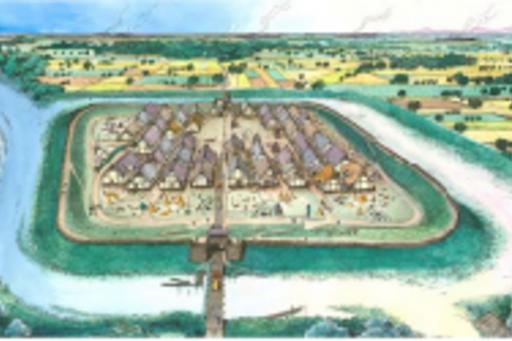
Textile production in the Terramare area
Archaeological studies have shown that extensive textile manufacturing was going on all over the area. However, an ongoing project at the University of Gothenburg (The Rise, funded by the European Research Council [ERC]) has detected that some settlements must have been more specialized in textile production than others. The work in progress, which will be published in 2016/2017, shows that there were places with evidence for large-scale manufacturing that were most likely producing textiles for export. Within THESP, research in the area will investigate additional aspects of the subject. In particular, the goal is to understand the interrelationship between the production of wool and woolen textiles and the local environment, including the many animals (sheep) that must have populated the plain.
Strontium isotope (87Sr/86Sr) analyses
There has been a growing interest in investigating prehistoric human mobility in recent years, and in many cases these studies rely on the measurement of strontium isotope ratios in human tooth enamel. One of the most prominent studies on human mobility has resulted from the analyses conducted by Karin M. Frei on the so-called Egtved girl, in Jutland. Different kinds of bedrock have different strontium isotope fingerprints depending on the age and type of bedrock. This fingerprint is transferred to and taken up by the water and vegetation in the landscapes where it grows, and is then passed on to the animals and humans through the food chain. From this distinctive signature it can be determined whether a prehistoric human or animal grew up locally or elsewhere. This method has proven reliable in many archaeological contexts, and hence is very robust. In humans, strontium is taken up in e.g. tooth enamel during childhood, and does not change thereafter. We can therefore identify potential mobility by a measuring and comparing the strontium isotopic signatures of the area where a particular individual was unearthed with that of the tooth enamel of the individual being studied.
In THESP we will apply the method to study sheep teeth and animal husbandry practices. The tooth enamel in sheep is different from that of humans as sheep teeth keep growing throughout an animal’s life. Different parts of the tooth correlate with different stages of the sheep’s life. Therefore, by performing multiple analyses perpendicular to the growth direction on a sheep tooth we will gain information on the geological landscape in which the animals grazed (including relevant information on herding practices, and possible transhumance patterns). In this respect the results will therefore contribute to and substantiate new perspectives on the human/animal (sheep) relationship from an environmental humanities theory standpoint. Additionally, we hope that this work will establish an alternative approach for investigating textile production in areas where there is a dearth of textile finds, or textile fragments simply have not survived in the archaeological record.
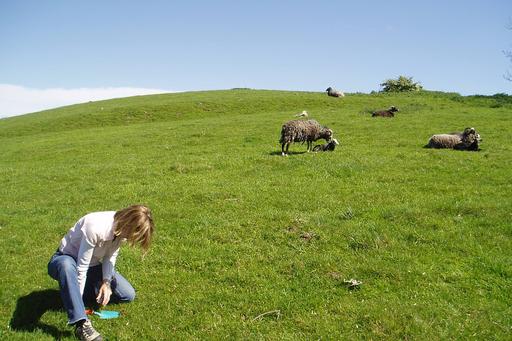
Project Participants
Sophie Bergerbrant
Department of Historical studies, Gothenburg University
Sophie Bergerbrant is an archaeologist with extensive experience relating to Late Neolithic and Bronze Age burial practices, society and identity.
She completed an M.Phil. in archaeology at the University of Cambridge in 1996 and defended her Ph.D. thesis, Bronze Age Identities: Costume, Conflict and Contact in Northern Europe 1600-1300 BC, at Stockholm University in 2007. In post-doctoral work, Sophie has participated in two large-scale EU-funded projects: the first in Trondheim, where she worked with textiles and textile production in the Hera-funded project Creativity and Craft production in Middle and Late Bronze Age Europe; the second in Gothenburg, where she participated in the ERC-funded project The Rise: transmissions and transformations in temperate northern Europe during the 3rd and 2nd millennium BC: the rise of Bronze Age societies.
She is a specialist in Bronze Age archaeology and is especially interested in research questions concerning mobility, human-animal relations, identity, gender, health, textile and textile production.
Karin Margarita Frei
National Museum of Denmark
Karin Margarita Frei is currently a Senior Researcher at The National Museum of Denmark. She holds a Ph.D. in Archaeometry and an M.Sc. in Geology/Geochemistry, both from the University of Copenhagen. She has been part of the management group at The Danish National Research Foundation´s Centre for Textile Research (CTR) at the University of Copenhagen. During her Ph.D. studies she developed a new method to trace the provenance of the raw materials in prehistoric textiles by applying the strontium isotopic tracing system. Her ground-breaking research was awarded with the international prize for the best Ph.D. in Archaeometry in 2011 in the University of Liege, Belgium by the Groupe des Méthodes Pluridisciplinaires Contribuant à l’Archéologie (GMPCA). She has also received several awards for her interdisciplinary research, including the For Women in Science 2012 prize granted by L’Oréal Denmark and UNESCO at the Danish Royal Academy of Science; Best Danish Research of the Year 2015 awarded by scientific newspaper Ingeniøren; and the Eilschou Holms Award 2015 granted by the Royal Nordic Academy of Ancient texts.
Karin’s work involves the application of strontium isotope analyses in archaeology on human and animal material as well as other organic archaeological material such as textiles and wood. Her primary interests are therefore mobility and trade throughout prehistory.
Serena Sabatini
Department of Historical studies, Gothenburg University
Serena Sabatini is an archaeologist with broad research interests and expertise both in the north European and the Mediterranean Bronze Age world. She works on issues relating to long distance contacts, trade and exchange during the Bronze Age in continental Europe and in the Mediterranean region. Serena has also conducted extensive research on burial practices, identity and society in the Late Bronze and the Early Iron Age both in Northern Europe and in the Italian Peninsula.
She has a Masters degree in Archaeology from La Sapienza University of Rome (1999) and earned her Ph.D. (thesis title: House urns A European Late Bronze Age trans-cultural Phenomenon) from the University of Gothenburg in 2007. Since then she has participated in and/or coordinated several research projects/networks of both local and international character. From 2012-2016 she conducted post-doc research within the ERC-funded project The Rise: transmissions and transformations in temperate northern Europe during the 3rd and 2nd millennium BC: the rise of Bronze Age societies. Thanks to her work within The Rise, Serena’s expertise now also includes Bronze Age textile production and trade, particularly in the Mediterranean.
Serena’s interests and experience also include Heritage Studies and pedagogy.
Publications
2022
Sabatini, S., Frei, K.M., De Grossi Mazzorin, J., Cardarelli, A., Pellacani, G., Frei, R. 2022. Investigating sheep mobility at Montale, Italy, through strontium isotope analyses. Journal of Archaeological Science: Reports 41: 103298. https://doi.org/10.1016/j.jasrep.2021.103298.
2021
Alberti, M.E., Sabatini, S. 2021. Bronze Age textile economies and practices side by side: the Terramare region in Northern Italy and Mycenaean Greece. In Borgna, E., Corazza, S. (eds.) Dall’Adriatico all’Egeo scritti di Protostoria in onore di Paola Càssola Guida. Udine: Forum, 181-195.
Sabatini, S., Alberti, M.E. 2021. Contrasting Bronze Age textile production in the Terramare region, Mycenaean Greece and in Cyprus: reflections and ideas / La produzione tessile nelle Terramare, in ambito miceneo e a Cipro a confronto: riflessioni e spunti. In Perra, M., Lo Schiavo, F. (eds.) Cultural contacts and trade in Nuragic Sardinia: the southern route (Sardinia, Sicily, Cretee and Cyprus). Cagliari: Arkadia, 151-174.
Bergerbrant, S & Vizce, M. 2021. Dating loom weights found as stray finds from Százhalombatta-Földvár, Hungary. Archaeological Textile Review 62(2020). 65-82.
2019
Sabatini, S. & Bergerbrant, S. 2019 (eds), The Textile Revolution in Bronze Age Europe: Production, Specialisation, Consumption. Cambridge: Cambridge University Press. www.cambridge.org/9781108493598
Sabatini, S. & Bergerbrant, S. 2019. Textile production and specialization in Bronze Age Europe. In: Sabatini, S. & Bergerbrant, S (eds.), The Textile Revolution in Bronze Age Europe: Production, Specialisation, Consumption: 1-14. Cambridge University Press.
Sabatini. S. 2019. Weaving in Bronze Age Italy: The Case of the Terramare Settlement at Montale. In: Sabatini, S. & Bergerbrant, S (eds.), The Textile Revolution in Bronze Age Europe: Production, Specialisation, Consumption: 39-79. Cambridge University Press.
Frei. K.M. 2019. Wool production and the evidence of strontium isotope analyses. In: Sabatini, S. & Bergerbrant, S (eds.), The Textile Revolution in Bronze Age Europe: Production, Specialisation, Consumption: 239-254. Cambridge University Press.
Bergerbrant, S. 2019. Local or traded? Wool textiles in Scandinavian Bronze Age. In: Sabatini, S. & Bergerbrant, S (eds.), The Textile Revolution in Bronze Age Europe: Production, Specialisation, Consumption: 255-273. Cambridge University Press.
The anthology is one of the outcomes of an international workshop organised within The Rise I project; however the content was consistently developed and edited within the THESP project.
Bergerbrant, S. & Sabatini, S. 2019. Välkommen till Ullåldern. Populär arkeologi 2019(5): 14-17.
Sabatini, S., Bergerbrant, S., Brandt, L. Ø., Margaryan, A., & Allentoft, M.E. 2019. Approaching sheep herds origins and the emergence of the wool economy in continental Europe during the Bronze Age. Archaeological and Anthropological Sciences.
2018
Bergerbrant, Sophie. 2018. Creativity and spindle whorls in Middle Bronze Age Százhalombatta-Földvár. In: L. Bender Jørgensen, J. Sofaer and M.L.S. Sørensen (eds), Creativity in the European Bronze Age: Understanding innovation in pottery, textile and metalwork production: 91-98. Cambridge University Press, Cambridge.
Sabatini, S., 2018. Wool economy during the European Bronze Age. Światowit, Annual of the Institute of Archaeology of the University of Warsaw LVI (2017): 43-55.
Sabatini, S., Earle, T. & Cardarelli, A. 2018. Bronze Age textile and wool economy: The case of the Terramare site of Montale, Italy. Proceedings of the Prehistoric Society 84: 359-385.
Research results
THESP - First Year Report
The project THESP started in January 2016. The three project members began at different times, and it was after the summer 2016 that we were fully operational.
Congratulations!
Heartfelt congratulations to project member Karin M. Frei, who became the first female Professor of the National Museum of Denmark on Tuesday, 22 November, 2016. Read more: http://www.carlsbergfondet.dk/da/Nyheder/Nyt-fra-fondet/Nyheder/KarinMargaritaFrei_Professor
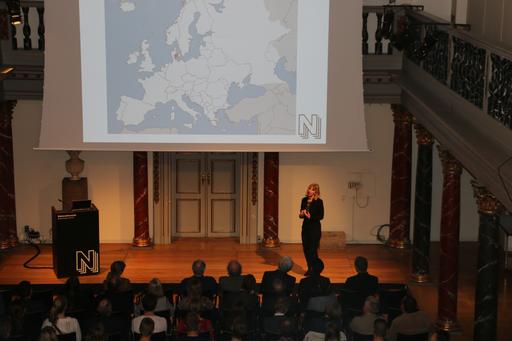
Samples: collection and analyses
‘Environmental’ samples have been collected both in Italy and Hungary. All samples from the Hungarian site have been processed and we now have the data needed to be able to work with a solid strontium isotope baseline/isoscape for this area during spring 2017. The environmental samples from the Italian site have also been partially processed and will be completed at the start of 2017.
The collection of animal samples of sheep teeth was completed for the Hungarian case study during summer 2016, and will be completed for the Italian site by January 2017. The Hungarian samples have already been processed, and the rest will be analysed in the course of 2017.
Project presentations
The first public presentation of the aims and methods of THESP took place in May at a research seminar for the Department of Historical Studies of the University of Gothenburg (18/05/2016).
At the 22nd Annual Meeting of the European Association of Archaeology (31/08-4/09/2016), Vilnius, Lithuania, we presented a talk on the main ideas and the modus operandi of the project in the session Tradition and Innovation in Textile Technology in Bronze Age Europe and the Mediterranean . The session has been video-recorded and can be see at https://www.youtube.com/watch?v=Gn0SiAa-rgU&feature=youtu.be.
The year 2016 ended with the presentation of a paper outlining the main aims of the THESP project at the conference 4º Peroni Day, Il Fenomeno Protourbano: Origini, Sviluppo, e Differenti Percorsi. Incontro di Studi in Memoria di Renato Peroni (19-20/12/2016), in Rome, Italy (http://www.iipp.it/19-20-dicembre-2016-4-peroni-day/).
Organised events
THESP project members have been variously involved in the organisation of:
- one lecture held by Dr Luise Ørsted Brandt (Copenhagen University) on Sheep Wool Development and Species Identification Investigated by the Analysis of Ancient DNA and Proteins. Wednesday, 2 March 2016, at the Department of Historical Studies, University of Gothenburg.
- a meeting (11/10/2016) to discuss sheep and aDNA which was followed by an open international seminar on Ancient European Genomics: New Research and Results, Gothenburg with the following papers:
- Emma Svensson (Uppsala University): Migration and Mobility in Western Sweden during the Late Neolithic
- Kristian Kristiansen (University of Gothenburg): Re-theorizing Mobility and the Formation of Culture and Language among the Corded Ware Cultures in Europe
- Daniel Bradley (Trinity College Dublin): Ancient European Genome Dynamics, Views from the Margins
THESP - Second Year Report
Samples collection and analyses 2017
New ‘Environmental’ samples have been collected both in Italy and Hungary to provide the best coverage possible. Additionally, the collection of sheep teeth samples was completed for the Hungarian case study during summer 2016, and for the Italian site during summer 2017. All of the animal samples that were collected have been analysed and for their strontium isotopic compositions and the yielded data is ready to be interpreted.
The strontium isotope baseline/isoscape samples for both the Hungarian and the Italian case studies have been analysed and the task of interpreting the data and writing them up is underway.
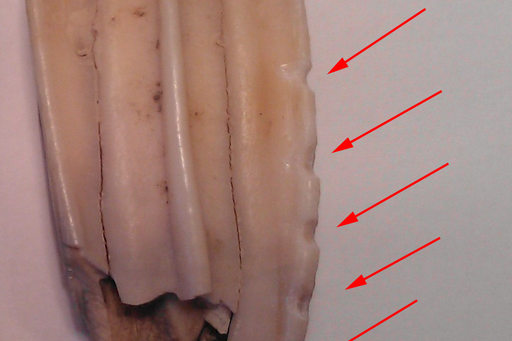
Started external collaboration
Samples for aDNA analysis in collaboration with Daniel Bradley, Trinity College Dublin have been collected from the Százhalombatta site. This collaboration is a direct result of last year’s aDNA workshop. The samples are currently being run.
Workshop
A regular part of our work has focused on the organization of an international workshop that will take place at the end of February 2018. The primary aim of the workshop is to gather a variety of colleagues and experts from relevant fields to discuss the results of our analyses in order to establish a solid basis for our forthcoming interpretations.
Project presentations
We presented and discussed the first-year results of our project at the Bronze Age Group meeting of the Department of Historical Studies in Gothenburg, in February.
A project member participated in the workshop Engendering prehistoric domestic space in Százhalombatta, Hungary on 15 July 2017.
The project and some preliminary results were presented at the conference Interaction: Local Consumption and Assimilation of Foreign Goods in the European Bronze Age, held at the “Alexandru Ştefulescu” Museum of Gorj County in Târgu Jiu (Romania), 4-7 October 2017.
Publications
We have written a number of publications some which have been submitted, others are just about to be submitted. Work on the book volume The Textile Revolution (see Publications) is in its final stages.
Awards and Prizes
In 2017 both Serena Sabatini and Sophie Bergerbrant were awarded the title of Associate Professor in Archaeology, at the University of Gothenburg, Sweden.
Interview with Serena Sabatini, only in Swedish: https://historiskastudier.gu.se/Aktuellt/Nyheter/fulltext/ny-docent-tar-storre-grepp-kring-bronsaldern.cid1438306
Interview with Sophie Bergerbrant, only in Swedish: https://historiskastudier.gu.se/Aktuellt/Nyheter/fulltext/hon-ser-pa-bronsaldern-genom-genusglasogon.cid1467262
Karin Margarita Frei was elected life-member of the Danish Royal Academy of Sciences and Letters: http://www.royalacademy.dk/da/Om-selskabet/Medlemmer/Nye-medlemmer-2017 (only in Danish)
Karin Margarita Frei was awarded with the Danish ‘Dansk Magisterforening Research Award 2017’ for her cross-disciplinary research in archaeology: https://www.magisterbladet.dk/news/2017/september/dmsforskningspriseridentitetsforskning (only in Danish)
Karin Margarita Frei was also awarded the international ‘Shanghai Archaeology Forum Research Award’ for her research work related to her research project Tales of Bronze Age women: http://www.kaogu.cn/en/International_exchange/Academic_activities___/2017/1211/60355.html
Third Year Report
Samples: collection and analyses
We have collected a number of new samples from both case study areas in order to supplement the earlier samples. This includes the collection and analysis of enamel from sheep teeth from additional sites located in the Benta valley, with the aim of comparing the management of sheep at Százhalombatta-Földovár and the surrounding settlements inside the valley. Samples from Montale’s earliest phases have also been collected in order to identify possible differences during these periods. A final material study of textile tools found at the tell Százhalombatta-Földovár has also been conducted.
External collaborations
Collaborative work with Professor Daniel Bradley, Trinity College Dublin continues, and results from the aDNA samples are expected soon. We also established a new partnership with Dr Gabriella Kulcsár and Dr Viktória Kiss at the Institute of Archaeology, Hungarian Academy of Science; this relates to work on the samples from the Benta valley. We also worked with Jacopo De Grossi Mazzorin, University of Salento, in a new collaboration that will lead to the development of comparative studies with other sites from the Garda region in northern Italy.
Workshop
THESP organized an international workshop that took place in February 2018. The primary aim of the workshop was to discuss the project’s preliminary results with our collaborators, and so experts in relevant fields were specially invited to attend. The workshop was extremely productive and successful in a variety of ways, including providing the opportunity to meet colleagues working on intersecting areas of research and to establish the new collaborations with Gabriella Kulcsár, Viktória Kiss, and Jacopo De Grossi Mazzorin mentioned above.
Project presentations
THESP international workshop, 26-27 February 2018, Gothenburg University. The project and its preliminary results were presented by all project members.
ARTEFACTA International Conference, 1-3 March 2018, House of Science and Letters Helsinki. Keynote lecture: Reconstructing biographies by strontium isotope analyses, Finland.
24th Annual Meeting of the European Association of Archaeologists (EAA), 5-8 September 2018, Barcelona, Spain. Paper: Community of practice as a tool for understanding technological changes and transformations: weaving in Bronze Age Po plain.
AIAZ (Associazione Italiana di Archeozoologia) 9th national conference, 28-30 November 2018, Ravenna, Italy. Poster: Bronze Age wool economy at Montale (MO, Italy): production, husbandry and society.
Academic teaching
Since 2017, THESP research results have been regularly presented to students at Gothenburg University at a number of lectures within regular academic courses at both first- and second-cycle courses.
Science outreach
During 2018 the project members have maintained a focus on outreach and actively disseminating research results to the public in Gothenburg, through:
- International Science Festival Gothenburg’s general programme
- International Science Festival Gothenburg’s school programme
- Visiting a primary school
- Open lectures at Museum of Antiquities Gothenburg (text in Swedish only)
- Lecture at the Swedish-Italian society in Gothenburg, Sweden (text in Swedish only)
Publications
We have worked on a number of publications in 2018, some already submitted and others currently in preparation for submission to scientific journals (see ‘Publications’ above for those already in print).
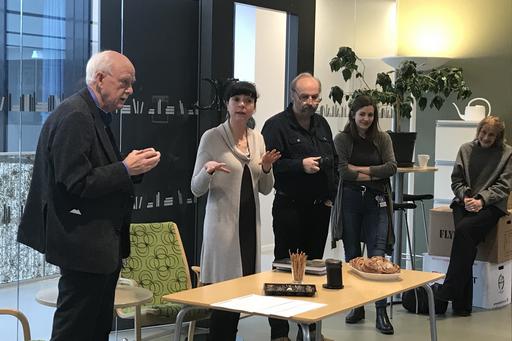
Fourth Year Report
External collaborations
We continue to work with Professor Daniel Bradley, Trinity College Dublin, and results from the aDNA samples are expected soon. Likewise, the partnership with Dr Gabriella Kulcsár and Dr Viktória Kiss at Institute of Archaeology, Hungarian Academy of Science continues as planned, with interpretations of the results of samples from the Benta Valley to be presented soon. The study of the textile tools from other sites in the Benta Valley will also be undertaken collaboratively in spring 2020.
Project presentations
The project was presented at the 15th Nordic Bronze Age Symposium Lund, Sweden, 11-15/06/2019. Paper: Investigating sheep husbandry and pastoral economy through an interdisciplinary approach: the case of the Terramare settlement at Montale, northern Italy.
The project will be presented at The Saxo Institute, University of Copenhagen 21/11/2019. Title: Bronze Age Wool Economy: the case of the Terramare site at Montale.
Organised session:
Bern, Switzerland, 4-7/09/2019, at the 25th EAA annual meeting. Session title: The Power of the Invisible – Discussing social, political and environmental impact of transformations in textile production, with Francesca Fulminante (University of Bristol and of Rome 3).
Within the session, Serena Sabatini presented the paper Sheep and political economy: the case of the Terramare site of Montale, northern Italy.
The results have also been used in lectures given by the project members at the Nordic and European Bronze Age (AE2018) course and at the Fashion and Clothing History (HI1640) in autumn 2019.
Science outreach
During 2019 the project members have been particularly active in disseminating their research results to the public in Sweden. For example:
- Lecture for Floda Hembygdsförening 25th September
- Article in Populär Arkeologi number 5, ’Välkommen till Ullåldern’
- Participation in part two of Swedish Television’s series De första svenskarna (English: The first Swedes).
- Blog about textile production http://www.cambridgeblog.org/2019/10/a-history-of-ancient-textile-production/ (in addition to the book is publicised on the Cambridge University Press web-page).
Publications
In 2019 we have worked on a number of publications, some already submitted and some soon to be submitted to scientific journals (articles that have already been published are listed under ‘publications’). Our edited volume The Textile Revolution in Bronze Age Europe: Production, Specialisation, Consumption is now published and available for purchase from Cambridge University Press.